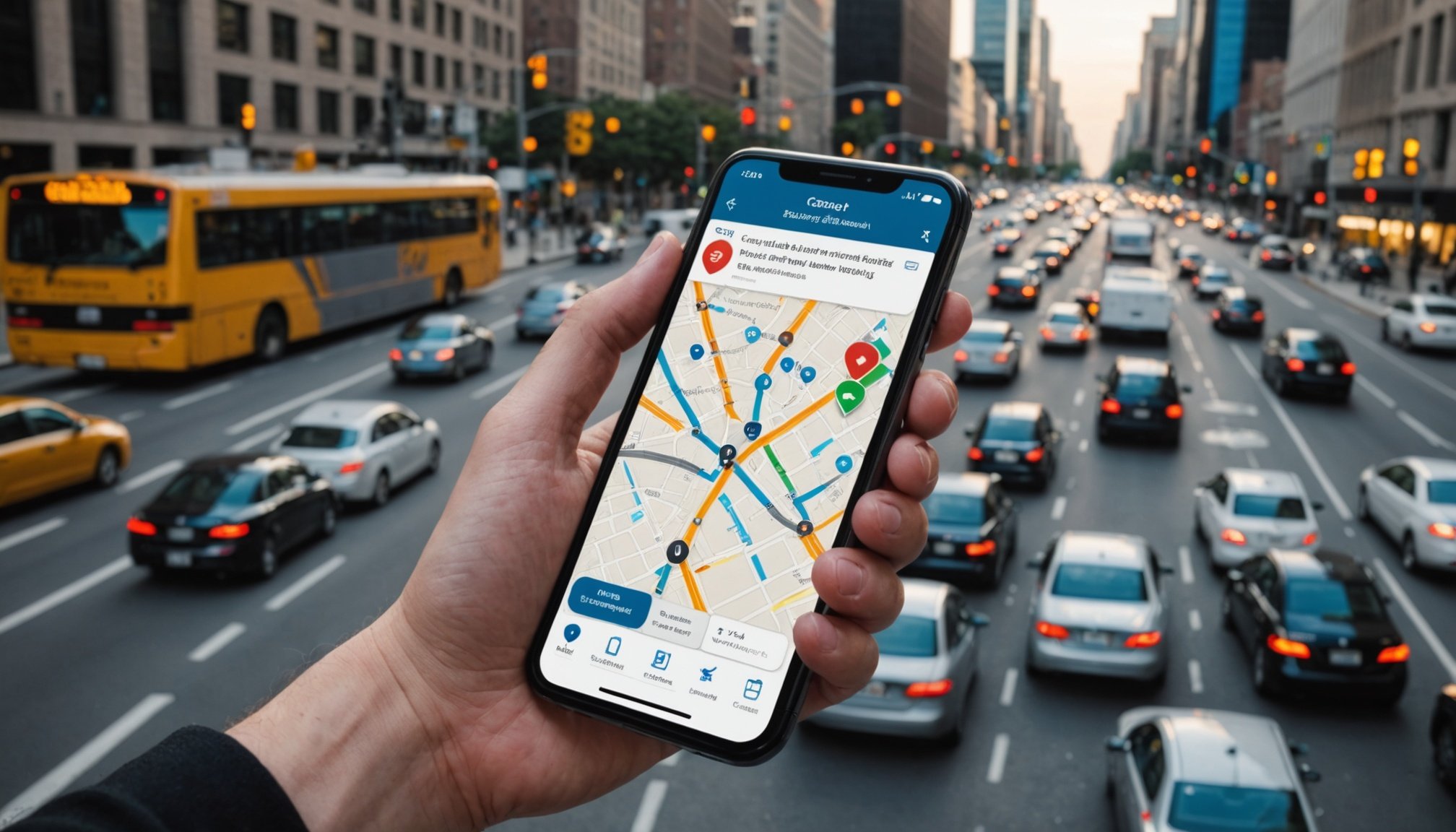Overview of Pro-Grade Traffic Alert Services
Pro-grade traffic alerts provide advanced, real-time traffic updates that are crucial for informed travel decisions. These services employ high-quality data analyses and algorithms to offer users timely information on road conditions, accidents, and traffic congestion.
Several popular apps specialise in delivering real-time traffic updates. For example, apps such as Waze, Google Maps, and INRIX are well-regarded for their accuracy and user-friendly interfaces. Each provides unique features, such as user-generated alerts and satellite imagery, which help users navigate around roadblocks efficiently.
The defining features of these pro-grade services include:
- Breadth of Coverage: They offer extensive geographic coverage, accommodating both urban commutes and rural travel.
- Data Sources: Pro-grade systems harness multiple data streams from government sensors, GPS data from users, and reports from other motorists.
- Precision and Accuracy: The updates typically offer minute-by-minute traffic assessments.
In essence, the advantages of using pro-grade traffic alert systems lie in their ability to provide reliable, real-time traffic updates, allowing travellers to adjust routes on-the-fly, saving time and reducing travel stress. When selecting an app, consider the frequency and accuracy of updates to ensure the best travel experience.
Have you seen this : Master Your Smart Home Irrigation: The Essential Smartphone Handbook for Complete Control
Setting Up Traffic Alerts on Smartphones
Setting up traffic alerts on your smartphone can transform how you travel, providing real-time information at your fingertips. Start by downloading a trusted app like Waze, Google Maps, or INRIX from your device’s app store. Search for “traffic alerts” or directly for these apps, ensuring they meet your needs for real-time traffic updates.
Once the app is installed, open it and grant necessary permissions, such as access to location services, which enables the app to provide accurate updates. Next, go to the app’s settings to enable notifications to receive alerts promptly. Most traffic alert apps have a tab dedicated to alerts and updates, where you can switch on notifications for events like accidents, road closures, or severe congestion.
Integration with existing navigation apps can further enhance your experience. Many real-time traffic alert apps offer seamless integration with navigation tools already installed on your smartphone. This means directions provided will factor in current road conditions, offering routes with minimal delays.
Setting up these alerts ensures you’re always informed, allowing you to make better travel decisions without the stress of unexpected road issues.
Customization Options for Personalizing Alerts
Customization options in traffic alert apps allow travellers to tailor notifications according to their unique needs. Most apps provide preferences for custom alerts based on specific commuting routes. By setting these preferences, users can receive notifications about issues directly affecting their journey, ensuring a smoother and stress-free commute.
Users can enhance their experience by adjusting settings in the app to suit their lifestyle. For instance, commuters can specify travel times and frequent routes, ensuring they only receive alerts that matter. This approach minimizes unnecessary notifications, streamlining the information that influences route choices.
Customizing alerts provides tangible benefits for regular commuters. By focusing on user preferences, these services can prioritise information on the most relevant traffic incidents. This personalised approach means travellers receive updates that enable quick decision-making, avoiding delays and optimising their daily routes.
For those frequently on the road, the ability to tailor these settings is invaluable. Such personalization transforms a standard app into a reliable companion that offers real-time traffic updates, enhancing efficiency and reducing stress during commutes. Engaging with these custom features positions users to make the most of their chosen traffic alert app.
Comparing Traffic Alert Systems
When examining traffic system comparison, evaluating the effectiveness of various traffic alert systems is crucial. Both pro-grade services and free alternatives have distinct characteristics. Pro-grade traffic alerts, for instance, provide real-time traffic updates and utilise sophisticated algorithms for accuracy. In contrast, free alternatives often rely on fewer data sources, affecting their precision and reliability.
Factors to consider in selecting a traffic alert system include data accuracy, geographic coverage, and user interface. Pro-grade systems, such as Google Maps and INRIX, offer comprehensive features like satellite imagery and crowd-sourced data, enhancing user experience compared to basic apps. However, users must weigh these benefits against potential costs associated with premium services.
The comparison also involves assessing the alert systems’ effectiveness in varying scenarios. For daily commuters, systems offering custom alerts and integrating seamlessly with navigation tools provide significant advantages. Meanwhile, occasional users might favour free alternatives that adequately cover essential routes without additional expense.
Ultimately, choosing a system demands analysing individual travel needs and preferences. Understanding these aspects empowers users to decide which traffic alert system best aligns with their objectives, ensuring optimal travel experiences.
User Reviews and Experiences
Understanding user experiences with traffic alert apps provides invaluable insights into their effectiveness and practicality. Many users commend the user-friendly interfaces and the precision of real-time traffic updates, which significantly enhance their daily commutes. For example, apps like Waze and Google Maps receive praise for their intuitive design and accuracy in delivering up-to-the-minute traffic data.
Common issues reported revolve around occasional inaccuracies in traffic predictions. While these instances are relatively rare, they highlight the importance of having diverse data sources to enhance reliability. In addition, some users mention sporadic alerts that can lead to confusion when navigating through complex road networks.
The importance of community reviews is undeniable when choosing a traffic alert service. Feedback often touches on the speed and relevance of updates, helping potential users make informed decisions. Insights gathered from reviews can guide app improvements, ensuring that user preferences are taken into account for updates and feature enhancements.
Overall, user feedback emphasises the convenience and efficiency that a well-chosen traffic alert system can add to everyday travel. Engaging with relatable reviews enables individuals to select an app that best caters to their specific needs.
Integration with Navigation Tools
Incorporating navigation integration in traffic alert apps greatly enhances travel efficiency. By seamlessly blending real-time traffic updates with existing navigation tools, users gain a comprehensive understanding of current road conditions. This integration helps travellers avoid delays caused by unforeseen roadblocks or congestion, ultimately optimizing travel time.
Popular navigation apps such as Google Maps and Waze support navigation integration, enabling them to adjust routes dynamically based on real-time data. This feature is especially beneficial in metropolitan areas where road conditions can change rapidly. For instance, a sudden traffic incident might occur, and the app recalculates the route instantly, directing the driver through less congested pathways.
Real-life scenarios illustrate the practical advantages of traffic updates in navigation integration. Imagine a daily commute where you receive an alert about a severe traffic jam on your usual route. With a few taps on your smartphone, the navigation app offers an alternative path, potentially saving you from significant delays.
In summary, navigation integration with traffic updates transforms how users experience their commutes, providing a smoother journey through timely and precise information. This synergy between apps can be a pivotal tool for those who rely on accurate travel data.











